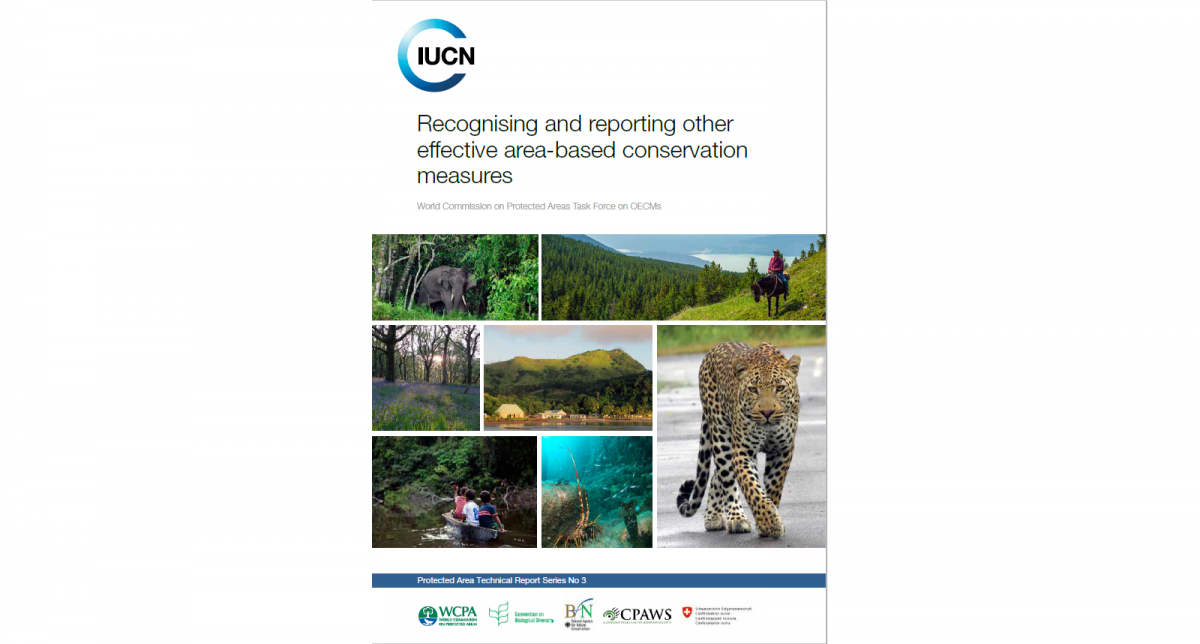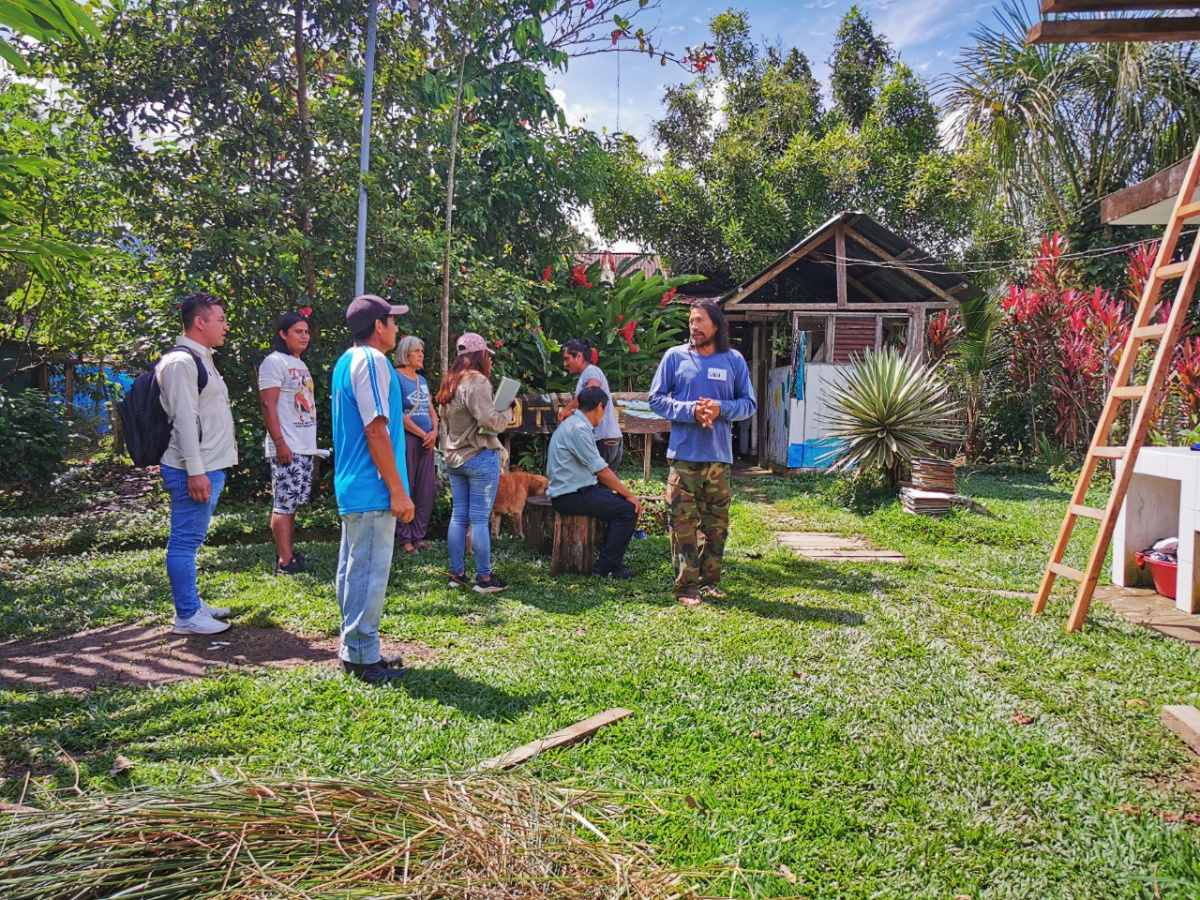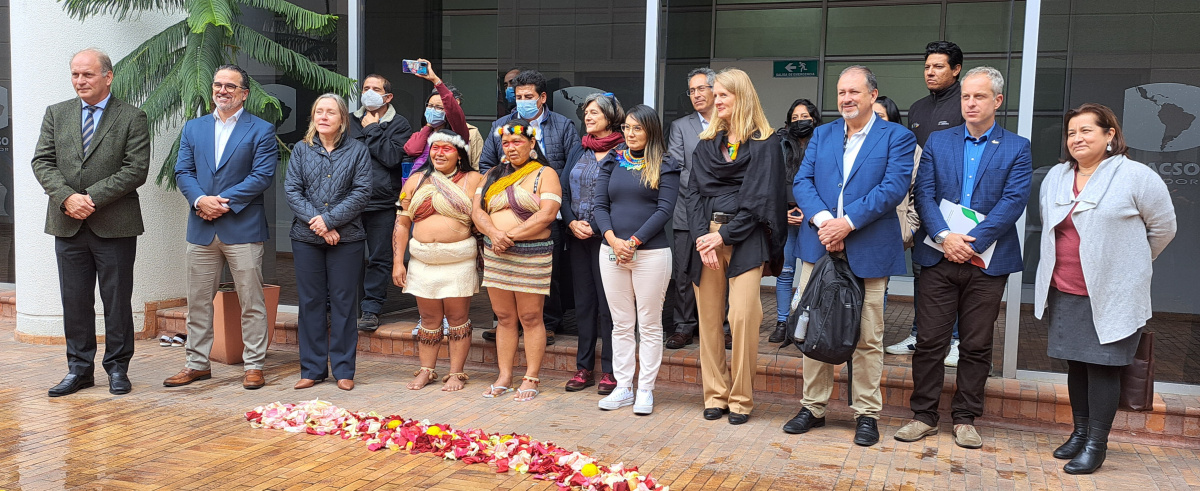IUCN publishes new guidance on "recognising, reporting and supporting ‘other effective area-based conservation measures’"
The IUCN World Commission on Protected Areas today released guidelines for ‘recognising and reporting other effective area-based conservation measures’ (OECMs) at the 24th meeting of the Convention on Biological Diversity’s (CBD) Subsidiary Body on Scientific, Technical and Technological Advice in Montreal.

Recognising and reporting other effective area-based conservation measures
Photo: IUCN
At the launch, WCPA Chair Kathy MacKinnon emphasized:
OECMs are an important means by which to accelerate progress towards the Aichi 2020 conservation targets and will likely be integral to the post-2020 global biodiversity framework.
Defining an OECM
The CBD has defined ‘other effective area-based conservation measures’, in these terms:
A geographically defined area other than a Protected Area, which is governed and managed in ways that achieve positive and sustained long-term outcomes for the in situ conservation of biodiversity with associated ecosystem functions and services and where applicable, cultural, spiritual, socio–economic, and other locally relevant values. (CBD Decision 14/8)
In November 2018, Parties to the CBD adopted this definition of OECMs, as well as guiding principles, common characteristics and criteria for their identification.
While protected areas must have a primary conservation objective, this is not necessary for OECMs. OECMs may be managed for many different objectives but they must deliver effective conservation. They may be managed with conservation as a primary or secondary objective or long-term conservation may simply be the ancillary result of management activities.
Recognition of OECMs
Recognition of OECMs offers a significant opportunity to recognise de facto effective long-term conservation that is taking place outside currently designated protected areas, under a range of governance and management regimes, implemented by a diverse set of actors. Some of these actors include indigenous peoples and local communities, the private sector and government agencies. OECMs can contribute to ecologically representative and well-connected conservation systems, integrated within wider landscapes and seascapes, and in doing so, generate a range of positive conservation outcomes, such as:
- Conserving important ecosystems, habitats and wildlife corridors;
- Supporting the recovery of threatened species;
- Maintaining ecosystem functions and securing ecosystem services;
- Enhancing resilience against threats; and
- Retaining and connecting remnants of fragmented ecosystems within developed landscapes.
The Guidelines
The guidelines will assist Parties in both interpreting the definition of a body of good practice by recognising and reporting OECMs, and making this learning operational.
It is designed for application at various scales, ranging from understanding whether an individual area is an OECM, to reporting OECM statistics at the national and global level as a means to assess progress on achieving conservation targets.
The guidelines were produced by the IUCN WCPA Task Force on OECMs in a multicultural, multinational collaborative effort that included over two hundred individuals, four international workshops and numerous events at meetings of the CBD.



